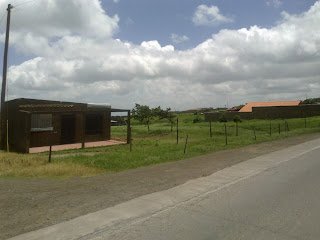
I’ve been traveling around Nicaragua for almost two years now, and I’ve seen lots of small towns out there. But none are like this one.The main form of transportation for Nicaraguans is by bus. It’s pretty cheap to travel for foreign tourists. The most expensive ticket I’ve bought was from Managua to San Carlos, close to 7 hours, at about seven dollars. And that was because we took the nice bus.
On the road you always pass by dozens of tiny little hamlets whose population ranges to no more than a few thousand. Nicaragua is the least densely populated country of all Central America. The people that live by the roads are generally farmers along with a few small businesses that cater to both the farmers and the travelers passing through.
 Then
the bus pulls out onto the highlands. Here the wind constantly whips
by at high speeds, bending trees, bushes and pedestrians as it
passes. The hilltops are almost naked of trees, however the glens
between them are full of forest that was sheltered from the winds.
Then
the bus pulls out onto the highlands. Here the wind constantly whips
by at high speeds, bending trees, bushes and pedestrians as it
passes. The hilltops are almost naked of trees, however the glens
between them are full of forest that was sheltered from the winds.All around the road are abandoned houses with missing walls and roofs. Sometimes you think that nobody lives here until you see some old woman hanging laundry between the destroyed structures. These “homes” often remind me of post-apocalyptic movies like Road Warrior where you see humans trying to cling to life in desolate waste lands.





